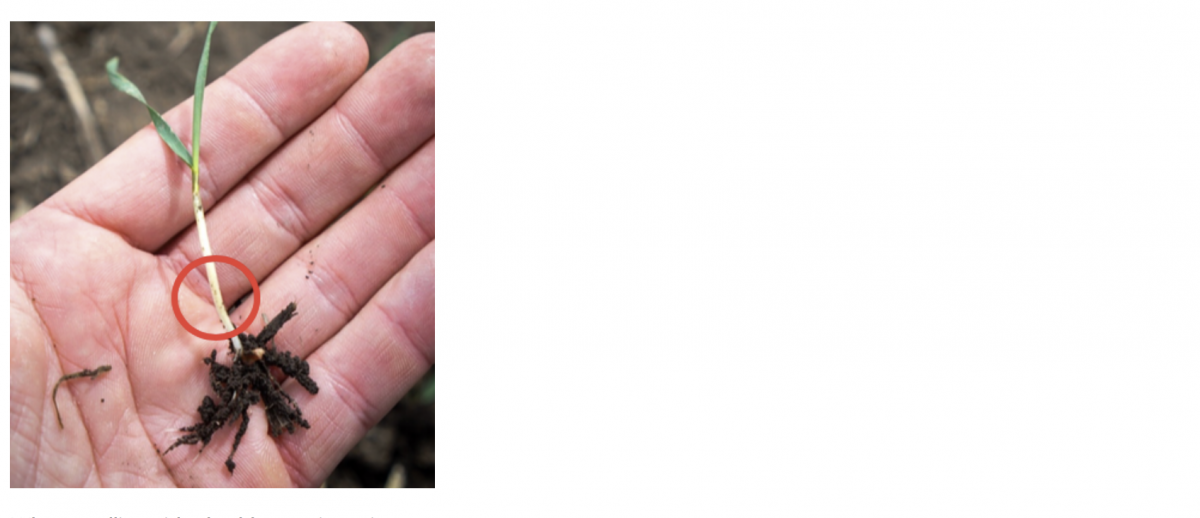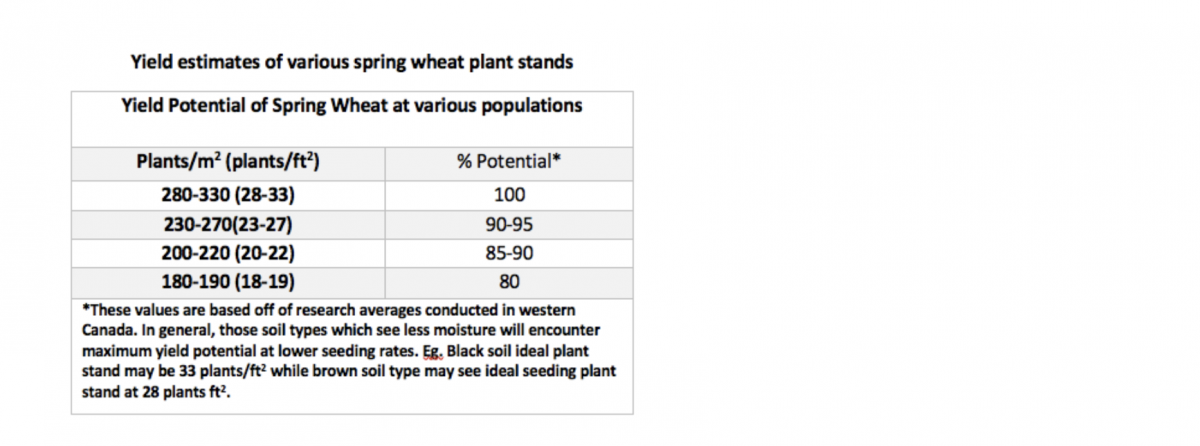Assessing cereal frost damage
Posted by Jeremy Boychyn, Research Agronomy Extension Specialist
Areas in central Alberta have been receiving nights below 0°C and the question of crop survival is never far off when this occurs. In general, wheat is relatively resilient to frost as compared to canola. Wheat can survive temperatures down to -8°C to -10°C (Barley is closer to -4 to -6C. However, minimal research on barley has been conducted.) especially when soil temperatures are above 10°C and help buffer the cold from impacting plants. This is due to the wheat plants growing point being under the soil surface till about the 5th leaf stage. That being said, if you do get cold temperatures, it’s still important to assess the impact.
When do I start?
Patience is needed before you are able to provide a proper diagnosis of the damage. Leaf and below ground plant material may take 3-4 days to display the full impact of frost damage. Scouting the field too soon can give misleading results. My suggestion would be to wait 3 days before walking into the field.
Checking plant stand and survivability
Wheat plants affected by frost will turn a dark green colour and appear water soaked after a couple days. Following this, the leaves will begin to turn necrotic and die. However, this does not mean the plant is dead. If the plant has survived, it will begin to produce new leaves after 4-5 days in warm conditions. If the climate is overcast and cool, it may take a few more days. If you are not seeing new leaves develop, the next step is to start digging up plants and checking for survival at the growing point of the plant. When you pull up the plant, look at the crown of the plant (the area where the leaves and the roots meet) and check to see if the area is white and alive with plant tissue or dark brown and soft/wet. If the crown is dark brown and soft/wet, the plant will not likely survive.

Wheat seedling with a healthy growing point
If you find there are a large number of plants that haven’t survived, you will want to assess your plant population and determine if action needs to be taken. Below is a table identifying yield potentials at certain plants stands for spring wheat.

May is coming to a quick close, which means that we will soon be out of the insurance window for spring wheat with AFSC. If you find your plant stand is below 100-125 plants/m2 (10-12 plants/ft2), you will want to assess reseeding options or seed into a shorter season crop such as barley. This number will vary based on moisture conditions for your region. Higher moisture regions may need to reseed at plants stands near 125 plants/m2 (12 plants/ft2), while drier areas will be closer to 100 plants/m2 (10 plants/ft2).

